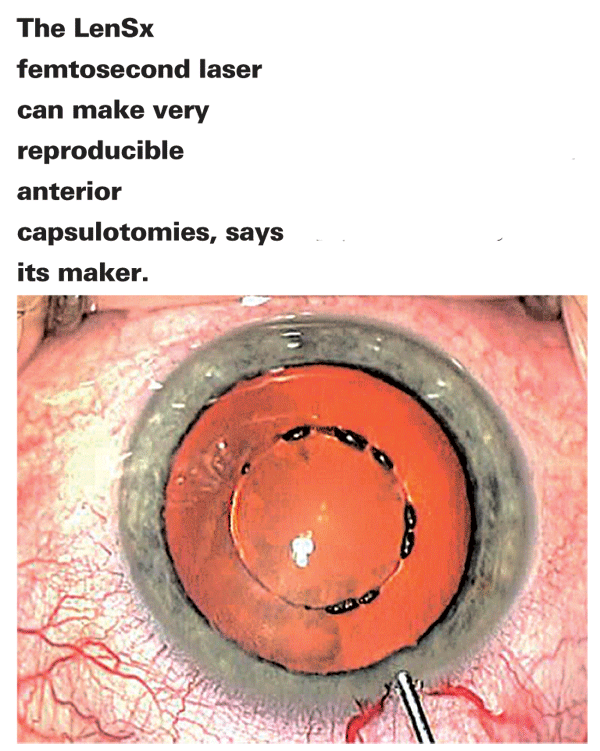Femtosecond lasers are making inroads in refractive surgery, so maybe it was only logical to expect them to make a run at cataract surgery, as well. Their advance started in earnest this spring at the annual meeting of the American Society of Cataract and Refractive Surgery, when researchers for
Then, in September, the company's laser received U.S. Food and Drug Administration 510(k) approval for creation of the capsulorhexis during cataract surgery. Here's a look at how the femtosecond cataract procedure works with the LenSx, and where the device may fit in the cataract surgery marketplace.
Houston

The company is billing the LenSx as faster, more reproducible and more precise than manual completion of the various steps of cataract surgery. "And, hopefully, safer, as well," adds Dr. Slade. "I think you'd use less phaco with this technology. Hopefully, it will allow us to make an entrance wound that's very reproducible, as well as precise capsulotomies."
In a study of capsulorhexis creation commissioned by the company at
Interestingly, the laser has also been used to break up the cataract itself. The emulsified material is then aspirated out of the eye using an irrigation/aspiration handpiece. For very hard lenses, it's possible that some phacoemulsification may be necessary. Dr. Slade says he "expects the laser to get better with time" in terms of its ability to chop.
Though the technology may be sound, the question remains whether surgeons, who are already successful with their current phaco equipment and cataract instruments, would take on the added expense of a new piece of equipment and its attendant learning curve.
"Hopefully, the precision, speed and possible increased safety will appeal to the surgeon and the patient," says Dr. Slade. "It has the potential to make patients more confident when deciding whether to undergo premium lens implantation."
As to how the cost of the laser will be presented to surgeons, a per-usage fee is probably in the cards. "I'm sure it will be some sort of combination of buying the device and paying per use," says Dr. Slade. "However, with the lasers we use in refractive surgery, I think we're kind of used to that approach now."




